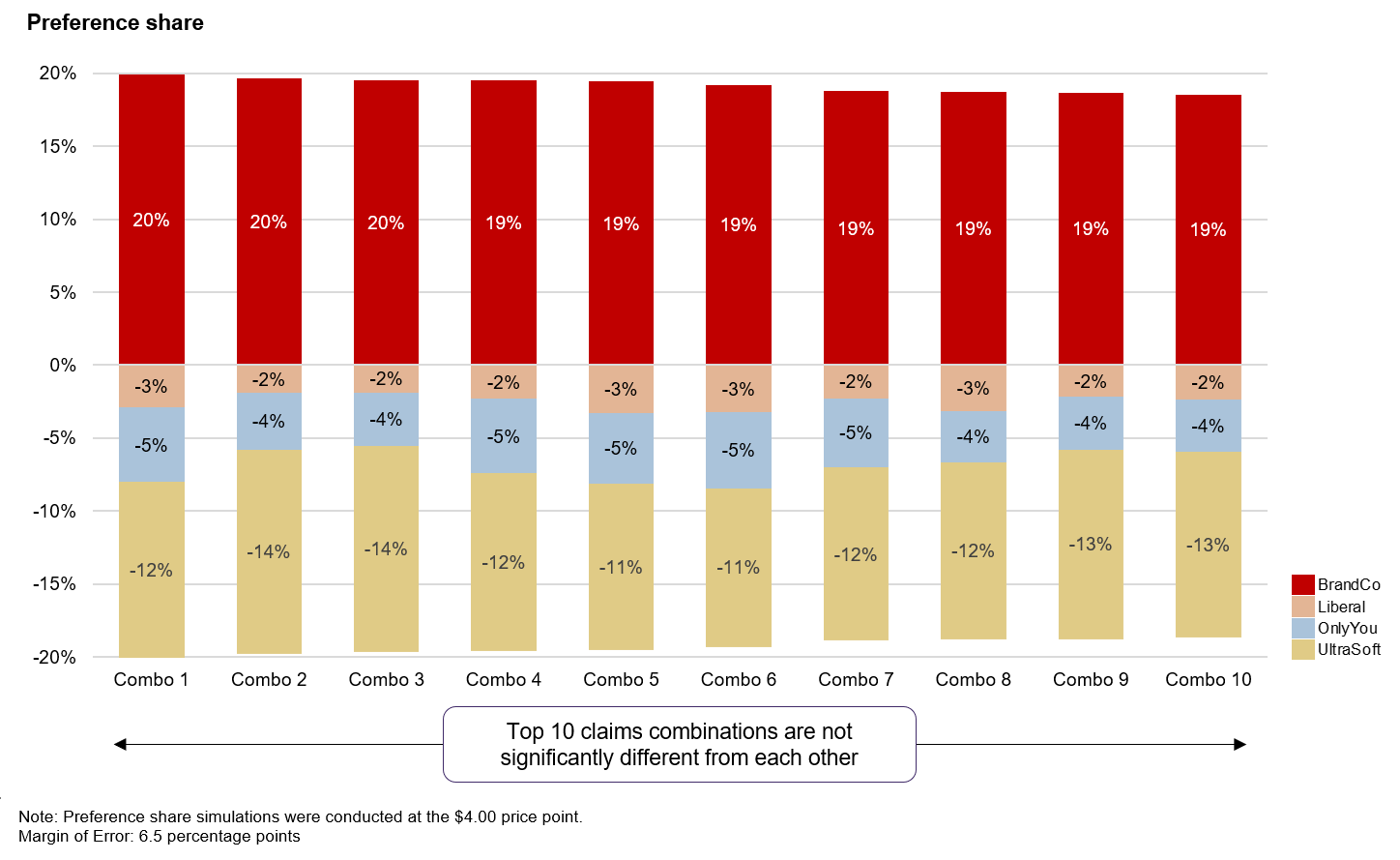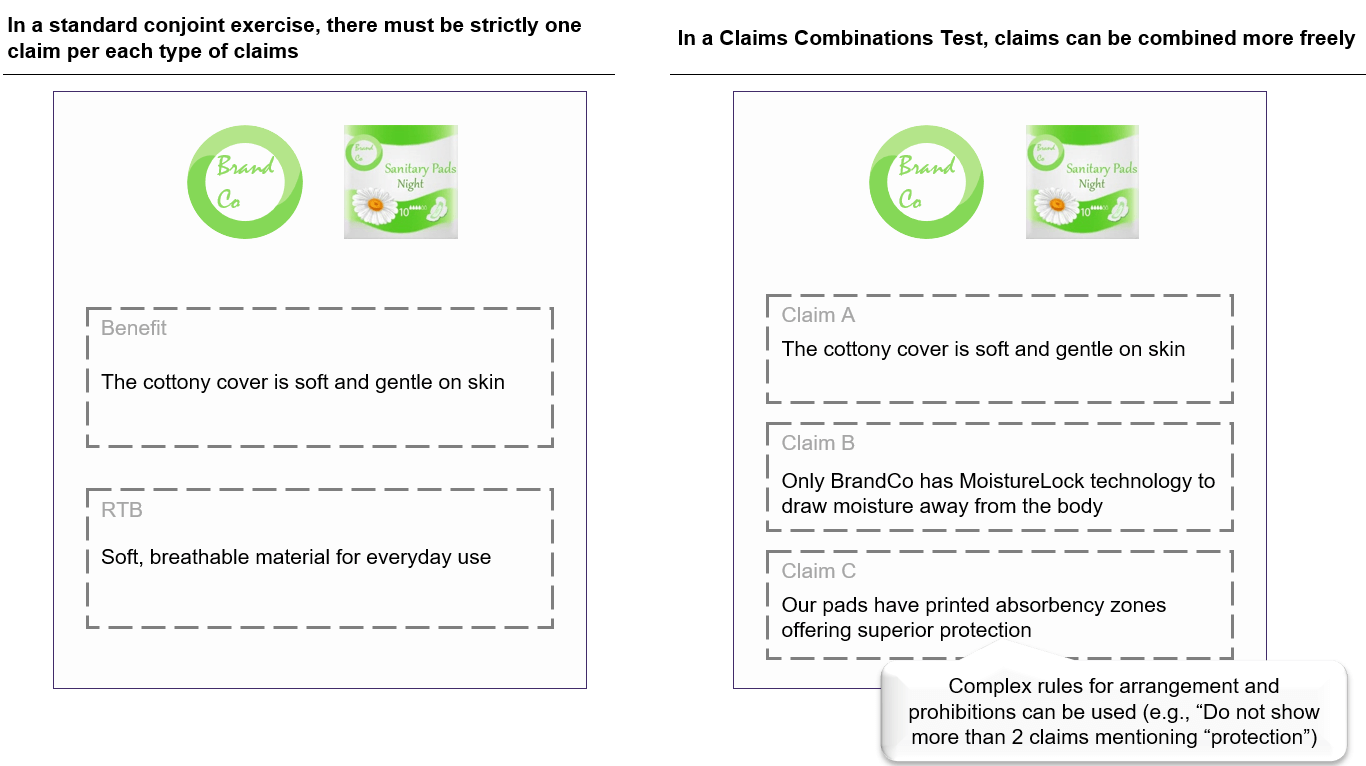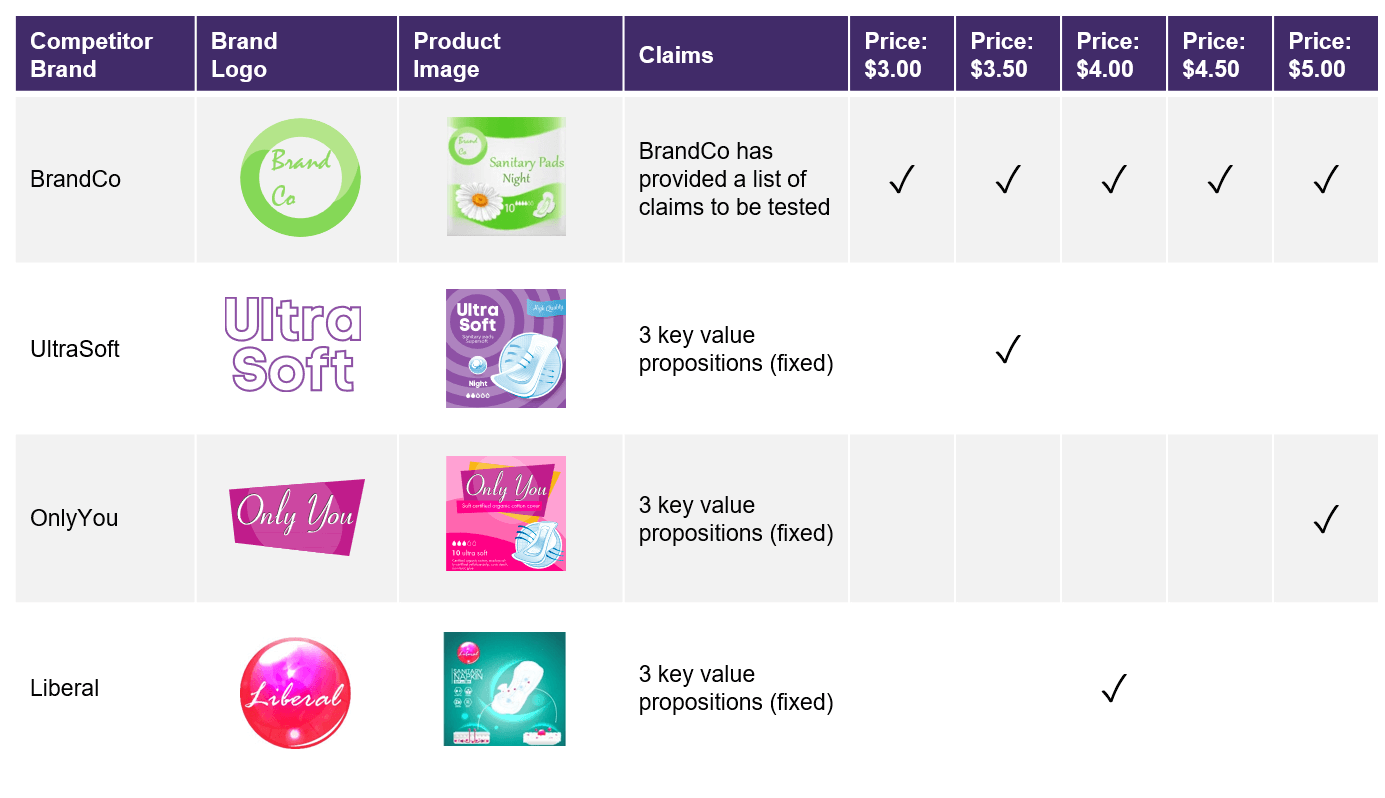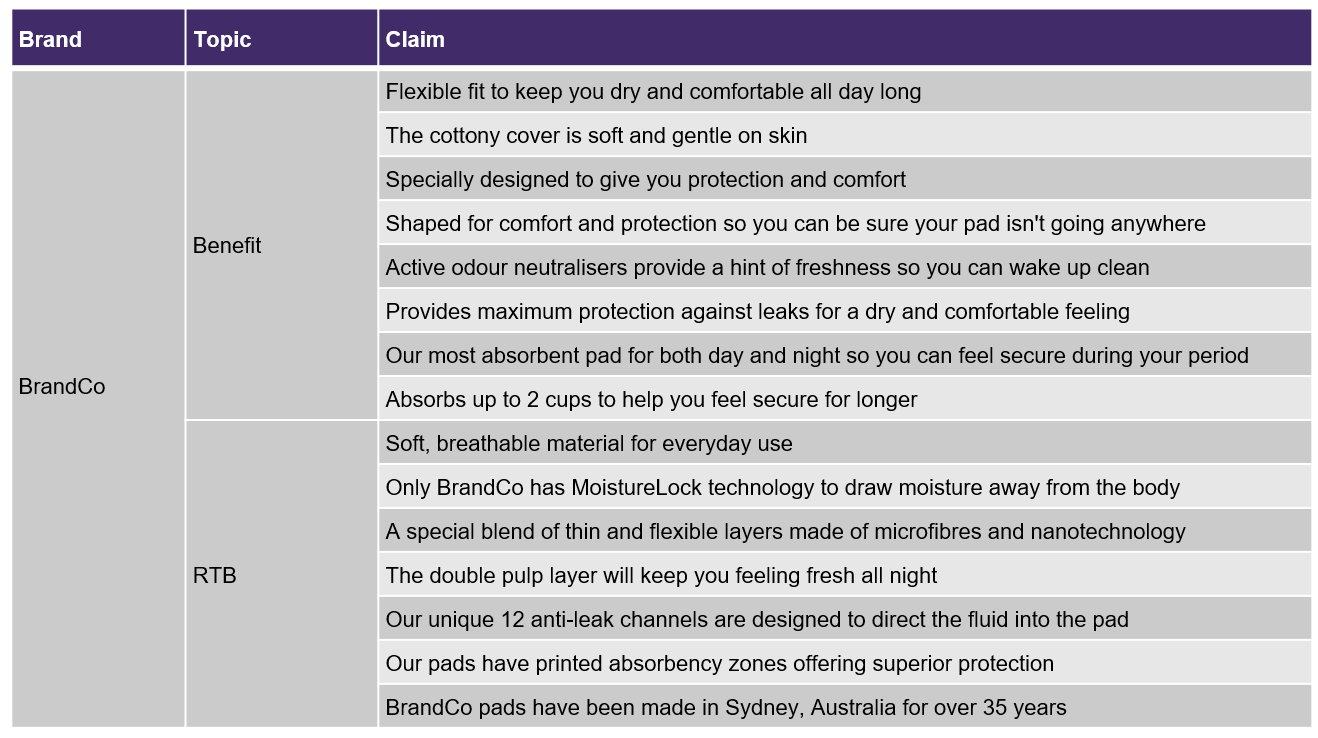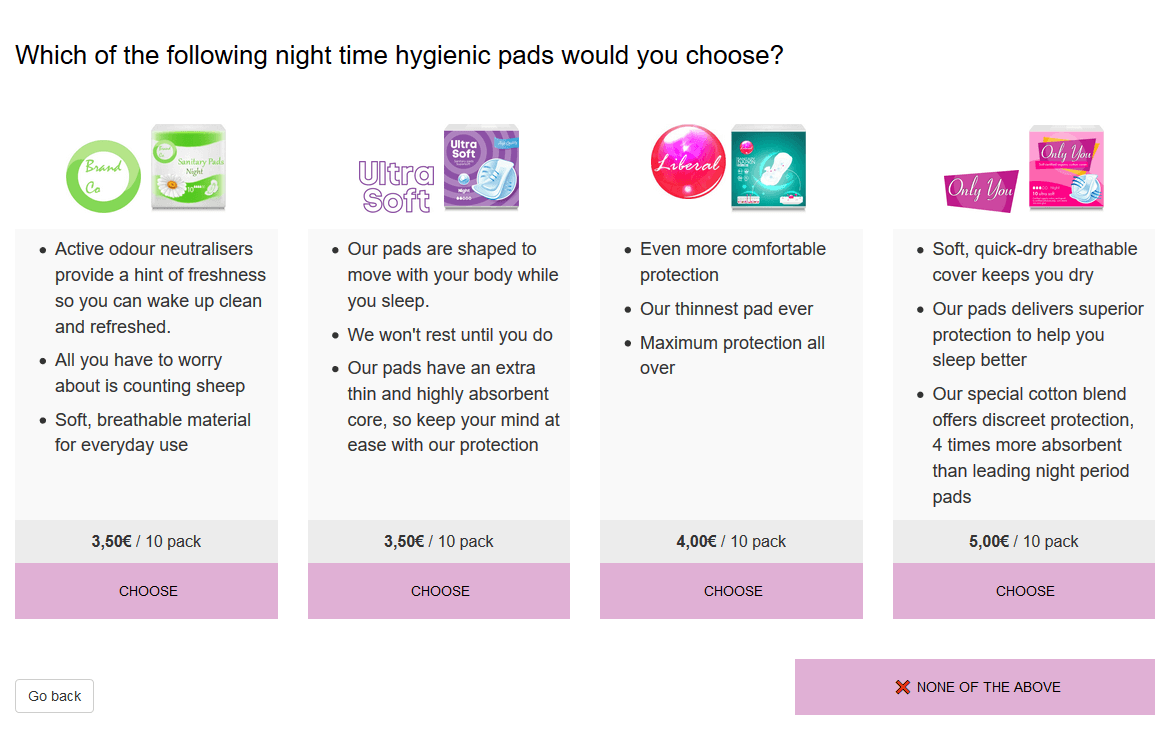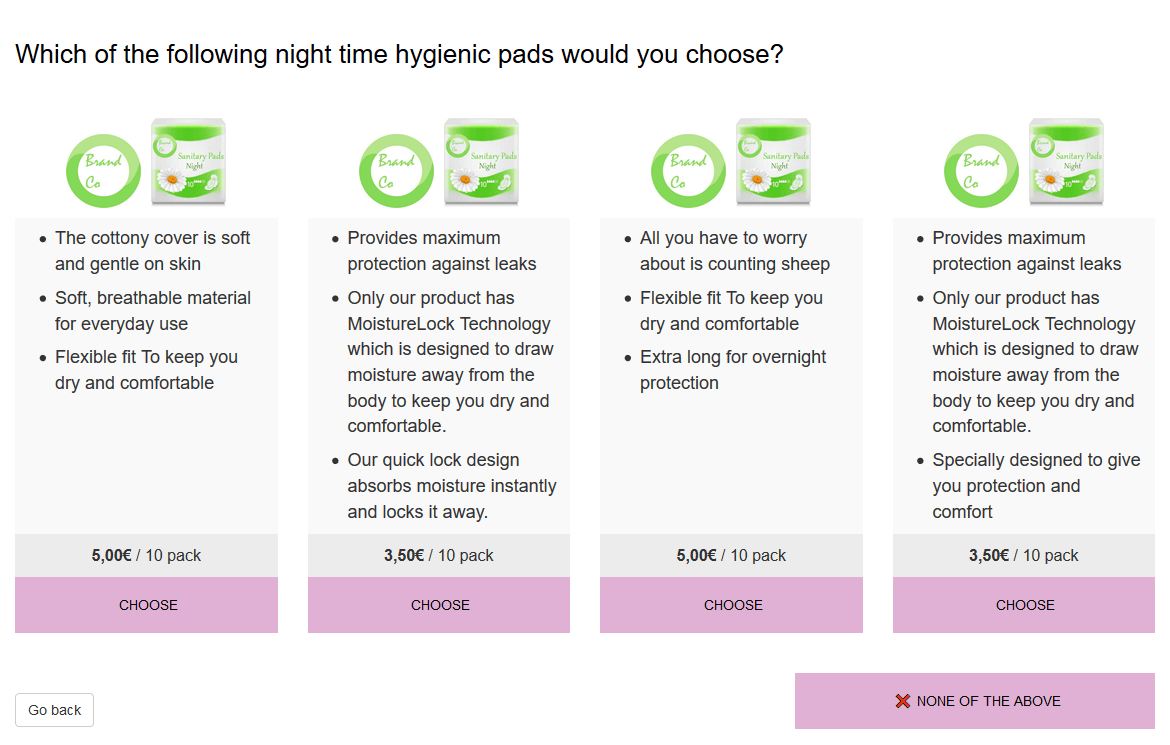Claims Combination Test
The Claims Combination Test is used when your product has several claims. To learn more
about Claims and Claims Testing, please refer to our article on claims testing for consumer goods. We’ve created the Claims Combination Test
using a methodology perfected over numerous projects with FMCG brands, allowing you to find the best
combinations of claims from a list of up to 100 individual claims ranked on preference share.
Conjointly’s unique methodology:
- Leverages a unique twist on choice-based experimental design to simultaneously provide insights on product features and pricing.
- Simulates preference share to compare performance of different claims combinations against competitors.
- Offers various diagnostic options to measure how well claims perform on standard measures, e.g. attractiveness, naturalness – or your own metrics.

Using Claims Combination Test to assess claims in combinations of 3 along different levels of pricing.
Respondents are asked to choose between one of four claims, arranged in various combinations.
Claims Combination Test surveys can be automatically translated to more than 30 languages.
Bring your own respondents or buy quality-assured panel respondents from us.
Key outputs
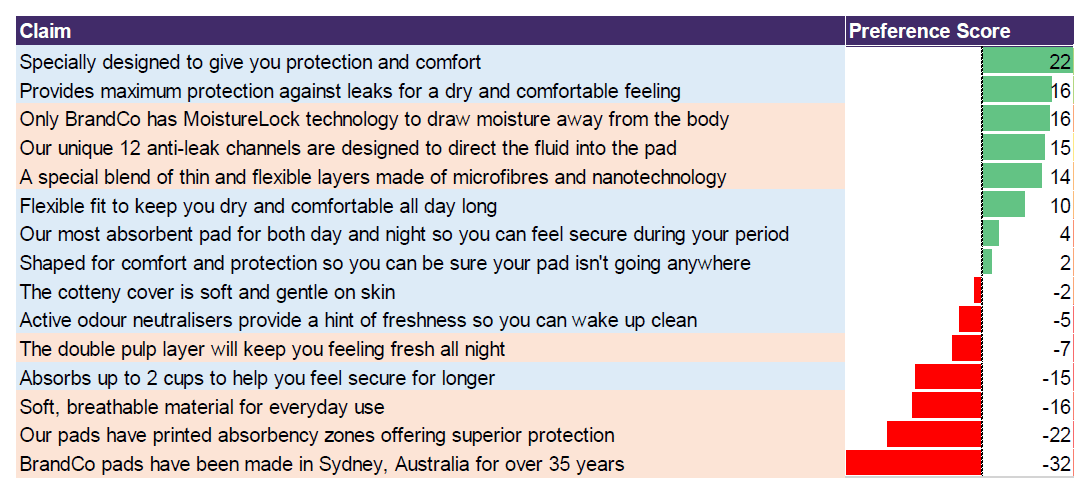
Ranking of Singular Claims by Preference
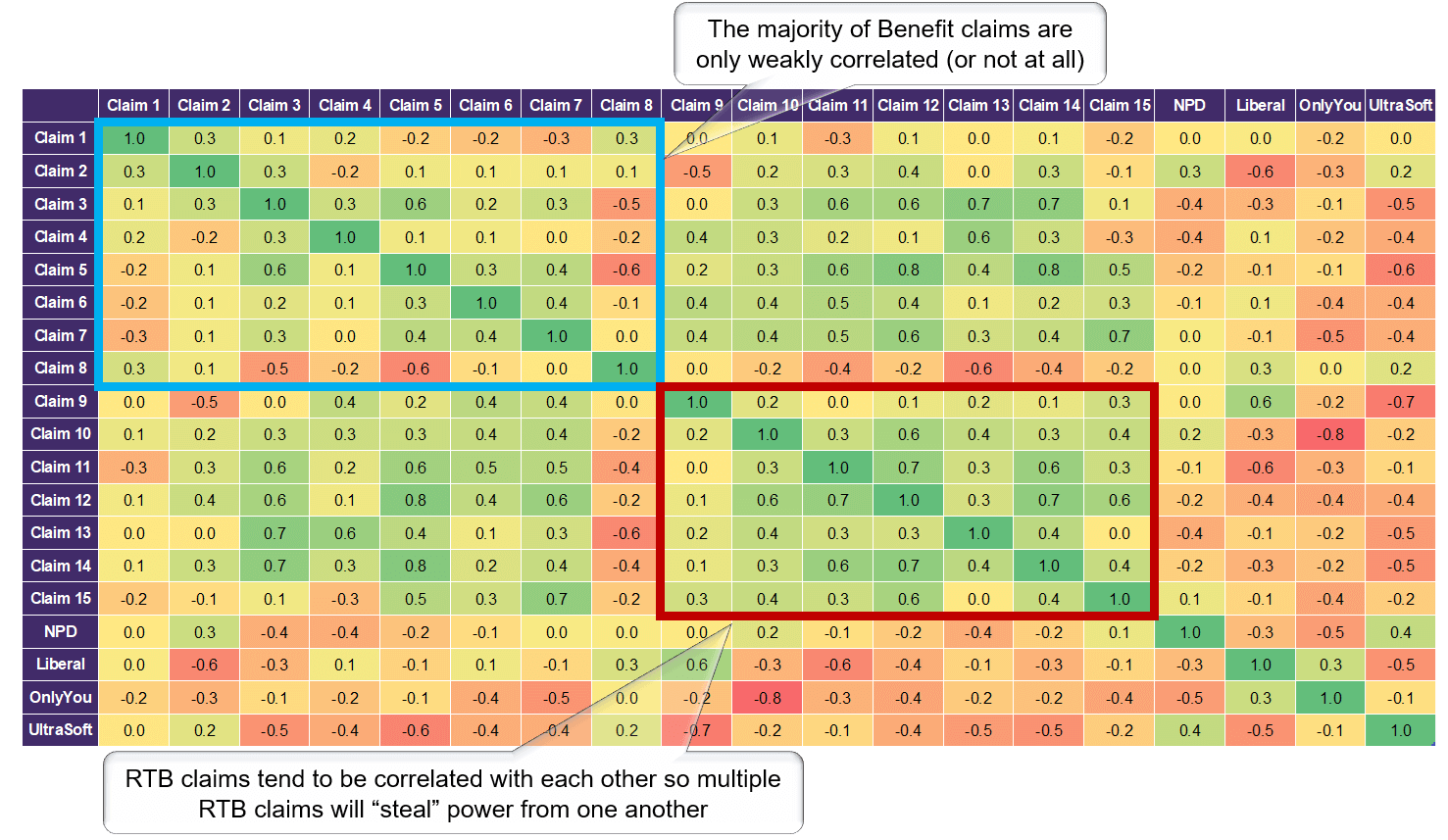
Examining Claims Correlation
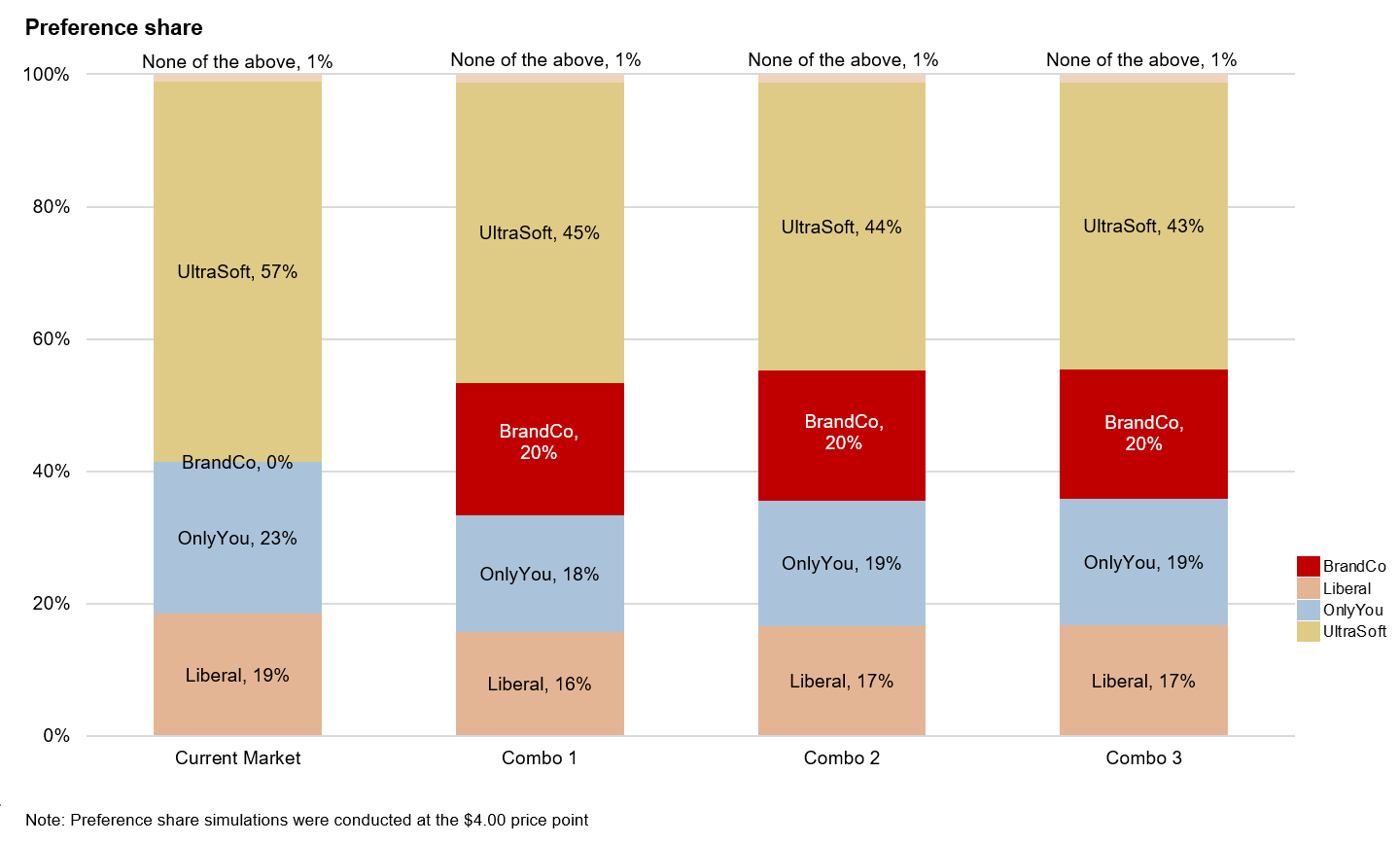
Simulating Preference Share
Preference share simulation showing the example product with different claims combinations identified the top claims combinations.
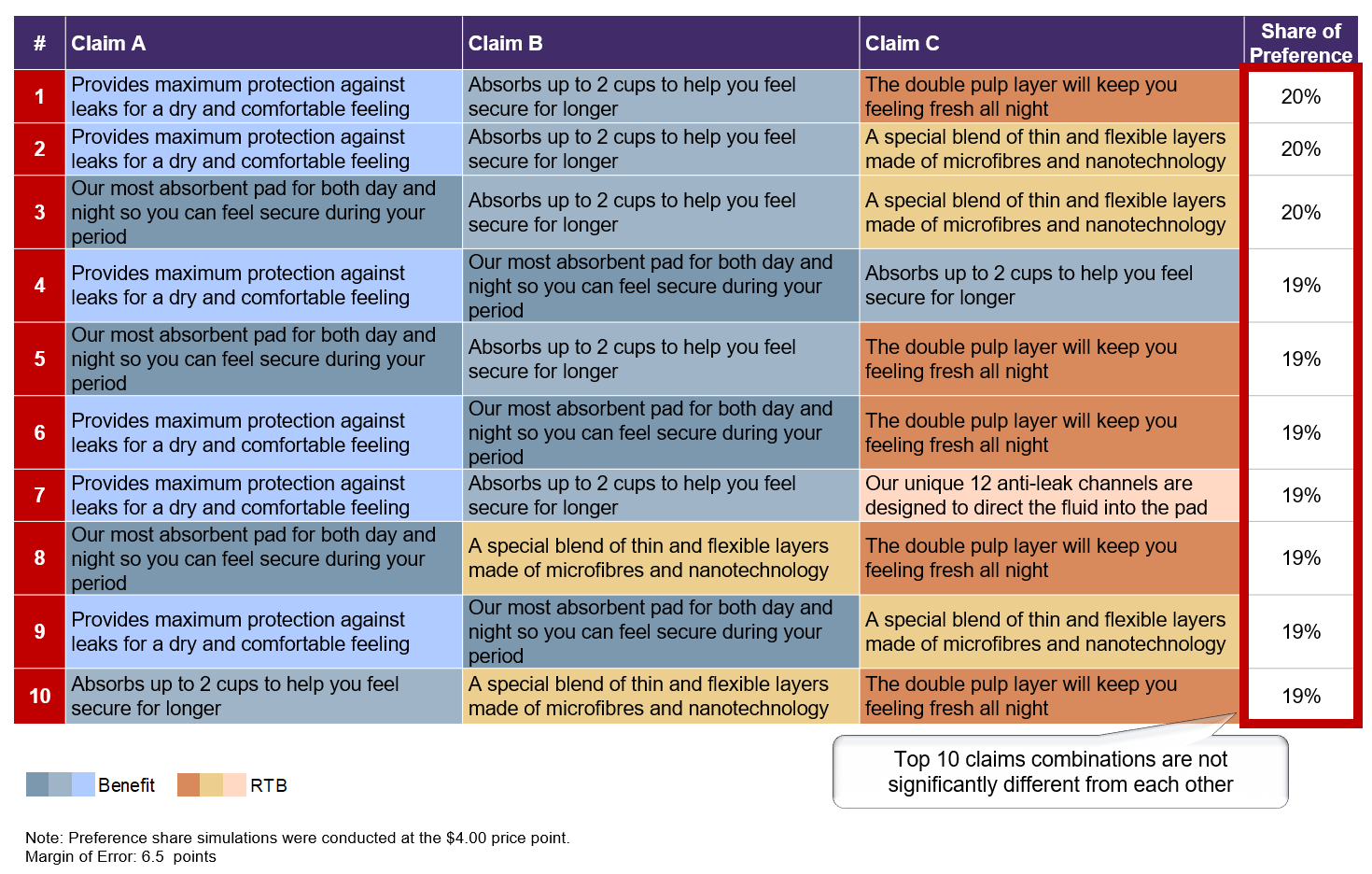
Analysing the Top Ten Claims Combinations
The share of preference in our example show shows that using claims combinations across both Benefits and RTBs takes the highest preference share.
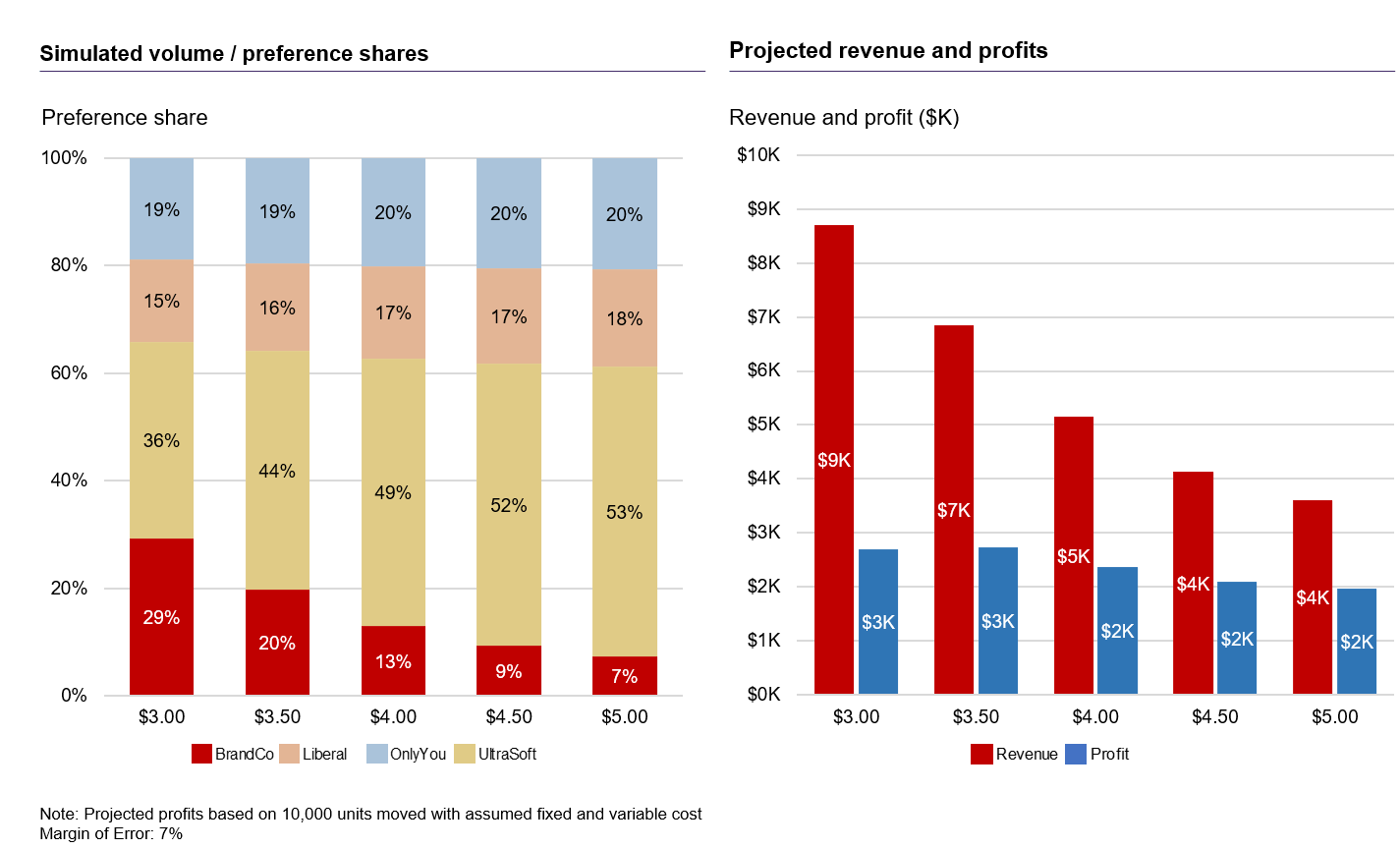
Simulating Volume/Preference Shares
